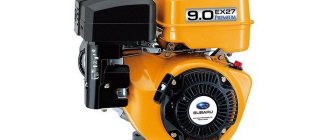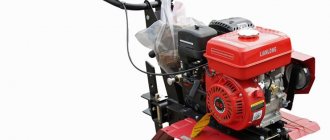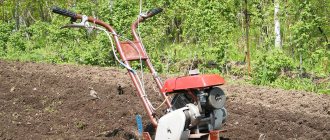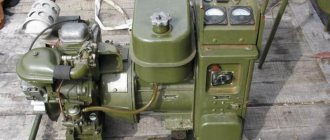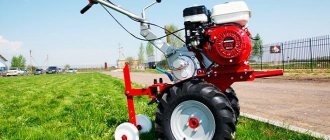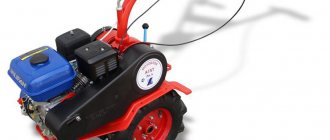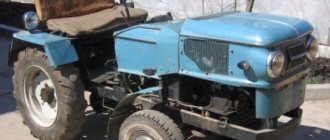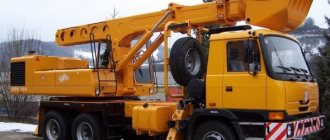Compact Lifan engines with a gearbox and clutch are designed to drive auxiliary equipment used in agriculture or during repair work. The units are equipped with a forced air cooling system; a cable starter is used for starting (on some products, supplemented with an electric drive). Installing a gearbox allows you to expand the power range of the equipment and reduces fuel consumption.
History of the Lifan company
The Chinese company appeared in 1992, its founder is Yin Mingshan. Initially, the company was engaged in the repair of motorcycles, and later moved to the production of scooters, buses and garden equipment. At this time, the company occupies a leading position among similar Chinese industries.
The priority when creating the company's products is reliability and quality, which serves as a certain marker for many buyers.
Every year the company introduces new technologies and conducts research. Thanks to this approach, new models of equipment with wider functionality appear regularly.
The company's main plant was almost completely re-equipped in the 2000s, which allowed the brand to develop further. The wear resistance of manufactured parts has increased, and working conditions have improved for workers.
The main plant was supplemented by 4 assembly shops and a painting line. It covers an area of 6 hectares. The company employs about 10 thousand people.
General information about the company
The main principles of setting up a walk-behind tractor carburetor
Walk-behind tractors are a category of equipment that has made life much easier for modern farmers. It significantly simplifies the process of carrying out various household works and is practical in use. Let's learn more about how to adjust the carburetor on the Lifan walk-behind tractor!
Setting up this important element is quite simple. To do this, you need to adhere to the basic points described below:
Warm up the engine before making adjustments.
Wait about 5 minutes and screw in the maximum and minimum throttle screws until they stop.
Unscrew each of them no more than 1.5 turns.
Set the gear shift lever to the lowest possible travel position (the engine should be running continuously).
Turn off the internal combustion engine and start it again, and as a result you should immediately notice a noticeable difference - an increase in noiselessness and uninterrupted operation.
Everything is extremely simple and clear. Experts recommend adjusting the carburetor of a walk-behind tractor before each season. It should be noted that loosening the bolts allows you to enrich the fuel with oxygen, which is necessary for stable operation of the internal combustion engine.
Types of Lifan engines
The Lifan company has a motor for a walk-behind tractor of gasoline and diesel type. Both options are characterized by a sufficient degree of reliability; the final choice depends on the buyer’s priorities.
Gasoline
The main difference between this type is its lower cost and reduced operating requirements.
Gasoline engines up to 6 hp. With. used for motor cultivators, brush cutters. More serious equipment is suitable for mini-tractors and agricultural machines.
Models equipped with an electric starter will cost significantly more.
Lifan 190 FD 18a
Diesel
They are characterized by sufficient power, can easily handle heavy loads, are able to perform large volumes of work for a long time, and do not require breaks.
Due to the characteristics of the main fuel, they are included in the list of economical ones; at low speeds they consume less diesel.
The equipment is more reliable during continuous use and less sensitive to elevated temperatures.
Lifan engines are often used on diesel walk-behind tractors.
Why do you need proper running-in?
It must be carried out after delivery of the unit from the store. This procedure is also done after a major overhaul of the engine and main components. The test is necessary to extend the life of the unit. This procedure will prepare the machine components for long-term loads.
Before carrying out you should:
At the end, maintenance is organized. The parts being tested are cleaned of dust and dirt and treated with diesel oil. The seals and bearings are also inspected again for damage. In the future, maintenance is carried out every 2 thousand hours of operation.
Advantages and disadvantages
The list of advantages of the company's engines is presented:
- electronic contactless ignition system;
- installed automatic decompressor;
- large fuel tank;
- sleeved engines with an increased service life of 3.5 thousand m/h;
- compliance with the declared characteristics.
There are practically no disadvantages noted by users; the only serious disadvantage is the cost.
Gasoline models with winter preparation have their own advantages. Reasons why they are chosen:
- the presence of a protective impact-resistant casing;
- reinforced parts with increased frost resistance;
- compact design due to the horizontal shaft;
- stable operation in all weather conditions;
- easy starting due to the decompression system;
- electronic ignition.
Lifan 177F-R engine with lighting coil
Adjusting the fuel system of a walk-behind tractor
If fuel is not supplied to the cylinder, then, first of all, you need to check whether there is enough fuel in the tank. You also need to check whether it is supplied to the carburetor. To do this, remove the hose from the inlet fitting of the device. If we are talking about a K45 type carburetor, you should press on its quencher so that fuel begins to pour out through the drainage hole.
If fuel does not enter the carburetor, then you need to turn off the fuel supply valve, completely disassemble it and remove accumulations of dirt from the mechanical cleaning filter. To achieve maximum purity, all components must be treated with gasoline. The fuel valve is reassembled and returned to its original location.
If fuel enters the carburetor, but is not supplied to the cylinders, it is necessary to check the correct operation of the fuel valve, as well as the presence of dirt on the jets.
To deal with the carburetor of a gasoline walk-behind tractor of the KMB-5 type, you need to remove it from the engine and empty the fuel from the float chamber. Through the fitting (see figure), through which gasoline is supplied, it is necessary to supply the air mixture, having previously installed the carburetor in the working position.
Rice. 2. Carburetor KMB-5
Details in the figure: 1 - fitting for supplying fuel; 2 - upper body; 3 — throttle valve; 4 — idle needle; 5 - jet; 6 — lower body; 7 — air damper; 8 - screw fixing the tie; 9 — maximum throttle needle; 10 - spray element; 11 — float; 12 — fuel supply valve.
https://www.youtube.com/watch?v=m06dz0RKblg
The fuel level inside the float chamber can be adjusted using the float tongue. Ideally, it should vary from 3 to 3.5 centimeters.
To purge the jets, you need to unscrew the screws responsible for full and low throttle.
Cleaning carburetor parts begins by unscrewing the screws holding the upper housing. The lower housing is removed, the fuel supply valve is washed with gasoline, and dirt is blown out of the nozzles with a pump. It is necessary to check whether the float is intact. It is strictly forbidden to use rags during the cleaning process.
After cleaning is completed, the housings are connected. It is necessary to ensure that the spray tube fits clearly into the hole located on the upper body. Open the throttle valve and check how well the assembly is completed. The screws securing the upper housing are tightened tightly.
If a DM 1.08.100 carburetor is installed on the walk-behind tractor engine, then the method for adjusting it will be as follows:
- You should tighten the low throttle screw 10 (Fig. 3) all the way and turn it away from you half a turn.
- Then you need to tighten the full throttle screw 9 and unscrew it completely by 2 turns.
- Unscrew screw 4 (Fig. 4) for minimum engine speed right up to the lever stop in the boss of the carburetor body and tighten it 2 turns.
- Start the walk-behind tractor engine, then adjust stable operation at maximum speed after warming up with screw 9.
Do not allow the engine control lever to be turned off, move it to the minimum throttle (speed) position and, by unscrewing screw 10, set a stable idle speed.
Rice. 3. Carburetor DM 1.08.100
Rice. 4. DM carburetor outside
That's basically it. The main points of adjusting the main parts of the walk-behind tractor are considered. Adjust your walk-behind tractor with pleasure!
Source
The process of installing the Lifan engine on a walk-behind tractor
Lifan engines are installed on a walk-behind tractor according to the standard scheme. Rules for implementation can be found in the instructions for the equipment.
We recommend watching an interesting video about installing a Lifan engine on a Cascade walk-behind tractor with your own hands.
And here’s an interesting video, the author of which tells and shows how to install the Lifan engine on a Luch walk-behind tractor.
Step-by-step instruction
Installation of the mechanism on the Oka, Ural, Neva is carried out according to a step-by-step algorithm:
- The bolts are unscrewed from the old engine and the protective casing with belts and pulley is removed.
- To disconnect the throttle cable, remove the air purification filter.
- Then the power unit itself is removed from the walk-behind tractor frame.
- The motor is installed and, if necessary, supplemented with a transition platform.
- A pulley is attached to the shaft, and a belt is tensioned for stable functionality of the track.
- The position of the unit is adjusted.
- The engine with the transition platform is fixed.
Before carrying out the procedure, the owner must first prepare all the necessary equipment for installation work.
Installation on a walk-behind tractor requires care, but is not difficult
How to break in
It is mandatory to break in the walk-behind tractor.
This point is not only important, but also key. The further service life of the engine and other equipment depends on this event. Under no circumstances should you add fuel and immediately start the engine - this can cause it to burn out. The device may be used after it has been properly run-in. This action is considered an automotive and engineering term. During break-in, all gear pairs located in the gearbox are ground in. Everything must be done according to the instruction manual. It indicates the permissible loads for a specific device. Failure to follow basic rules can lead to premature failure. If the function of the walk-behind tractor is to plow soil up to 50 cm deep, then the action is carried out at 30 cm and only on virgin soil. Break-in time depends on the specific device. Some engines are sold with oil filled, others are sold dry. This point must be taken into account. Particular attention is paid to machine oil.
It is important to determine which engine will be used. The hint is on the labels and stickers that come with it. When the oil is poured into the crankcase, you can begin running-in. If it is not there and there are no prompts on the engine, you need to pull out the dipstick and check for the presence/absence of lubricant. If there is oil, you need to start running it in; if not, fill it up.
If difficulties arise, it is recommended to unscrew the oil drain bolt and check for oil.
It's a simple action. If lubricant is present, it will flow immediately. In this case, it is recommended to drain it and fill with new oil. When running in a motor cultivator, you should not accelerate it - this can lead to unpleasant consequences. It is not recommended to torture the technique; the procedure is carried out slowly and carefully.
Sequencing
Running in is grinding in and running in all the parts that are in the engine, transmission and chassis. The action is carried out in a gentle manner for the first 8-10 hours; it is not recommended to rush and work at full capacity. There are 4 basic rules to follow:
Every device owner should know how to break in a walk-behind tractor. After all, the further operation of the device depends on this. At the end of the break-in, it is necessary to change the oil in the engine and transmission components. Under no circumstances should the engine be allowed to idle without moving. This is the most common mistake. It can lead to serious problems in the future.
Scope of application of Lifan engines
These power units are used in agriculture for various types of equipment. The selection is carried out strictly according to technical indicators, the features of the engine, gearboxes, etc. are discussed in detail.
Each motor has its own purpose - some types should be used on small-sized equipment, others can function on large agricultural machines and tractors.
The mistaken purchase of an unsuitable engine will lead to its rapid wear and will require frequent repairs or even the purchase of another unit.
Walk-behind tractors
Engines for the Lifan walk-behind tractor must be selected taking into account the functional purpose of the equipment.
Here all units are divided into two large subgroups:
- with a plow - are more powerful in the line, used for cultivating a large area of land;
- milling type - the movement of devices occurs due to the rotational movements of cutters installed instead of wheels; the equipment is lightweight, highly maneuverable, and easy to operate.
Milling walk-behind tractors are suitable for summer cottages and small agriculture.
For a plow, you should choose a motor with more power. Milling varieties of walk-behind tractors are not so demanding.
You need to choose taking into account the characteristics of the equipment
Gasoline generators
Compact gasoline generators have a wide range of models, presented:
- starters of manual and electric type;
- control panels - analog and digital options.
For convenient movement, the products are additionally equipped with wheels, they have a protective housing and an effective air cooling system.
The design of a gas generator is based on a simple but efficient gasoline engine. It is manufactured under license from Honda (Japan).
These varieties are suitable for industrial and domestic use.
The equipment is different:
- economical, high efficiency;
- stable current quality, spacious tanks;
- low noise level with vibration;
- increased engine life;
- easy maintenance due to the simplicity of the design;
- at an affordable price.
The company produces single-phase and three-phase generator models with simple load connection.
Petrol generator Lifan
Motor cultivators
Mini-cultivators are lightweight mechanical units used for soil cultivation. Their low weight gives them greater maneuverability.
The product design includes:
- removable motor;
- wheel module with working cutters;
- control system.
Motor cultivators are used to cultivate areas from 70 to 100 m2, suitable for women and the elderly. A special feature of the equipment is the steering wheel, equipped with a vibration damping device.
Motor-cultivator Tselina with a Chinese-made engine
Main features
It is in a high-quality carburetor that the working mixture is formed, which is supplied directly to the internal combustion engine. Various engine operating parameters depend on the quality of this process. Accordingly, if any malfunctions occur, you should adjust the carburetor of the Lifan walk-behind tractor or any other equipment. The process itself is quite simple and, if you have basic knowledge, will not take much time.
What do you need to know about this process?
The fact is that the composition supplied to the engine comes in 3 types: normal, enriched and lean. If there is a lot of air, the mixture will be lean. In this case, fuel consumption will not be maximum, but high power will not be achieved. To set this parameter in the desired range, carburetor adjustment is applied.
Carburetor adjustments do not need to be done indoors. The fact is that this releases exhaust gases that negatively affect the human body. Open the doors in the garage or even perform valve adjustments or ignition adjustments outdoors.
Review of the Lifan engine range and their characteristics
When choosing the right equipment, experienced users carefully study the list of characteristics and parameters. This approach eliminates the purchase of unnecessary units.
Lifan168F-2R
Single-cylinder four-stroke gasoline engine.
| Name | Meaning |
| Power | 6.5 l. With. |
| Crankshaft | Under the key |
| Crankshaft Shank Diameter | 20 mm |
| Number of cylinders | 1 |
| Engine capacity | 196 cm3 |
| Rotation frequency | 3.6 thousand rpm |
| Fuel tank | 3.6 l |
| Cylinder diameter | 68 mm |
| Piston stroke | 54 mm |
| Rotation speed at MCM | 1.5 thousand rpm |
| MKM | 18 Nm |
| Cooling system | Air |
| Oil sump container | 0.6 l |
| L/W/H (in mm) | 395/360/360 |
| Weight | 20 kg |
Lifan 168F-2R
Lifan 168F-2
The four-stroke single-cylinder gasoline engine has the following characteristics:
| Name | Meaning |
| Engine power | 6.5 l/s |
| Diameter at shaft | 20 mm |
| Drive shaft location | horizontal |
| Ignition system | thyristor, contactless |
| Launch | manual |
| Fuel tank volume | 3.6 l |
| Oil filling volume | 0.6 l |
| Cylinder diameter | 68 mm |
| Cylinder liner | made of cast iron |
| Piston stroke | 54 mm |
| Working volume | 196 cubic centimeters |
Lifan 168F-2
Despite the biased attitude towards the equipment of Chinese manufacturers, Lifan equipment is worthy of attention. The units are characterized by a long service life and reliability. Some models provide for operation in the cold season and are characterized by increased frost resistance.
The video below shows in detail how the Lifan 168f-2 engine is installed on a Ural walk-behind tractor.
Safety instructions
WARNING To ensure safe operation of the engine:
If you follow the instructions, the LIFAN engine will be a reliable and safe assistant for you. Read and make sure you understand the instructions before working on the engine. Otherwise, you risk injury or engine damage!
- Always inspect the engine (page 6) before starting it.
- To avoid fire and to ensure adequate ventilation, keep the engine at least one meter away from any structures or other equipment during operation.
- Do not place flammable objects close to the engine.
- Keep children and pets away from the engine while it is running, as... They may be burned by hot engine parts or injured.
- You must know how to quickly turn off the engine and must understand all the intricacies of operating it. Never allow anyone to start the engine without detailed instructions.
- While the engine is running, do not place flammable materials such as gasoline, matches, etc. close to it.
- Refuel the engine in a well-ventilated area, after turning it off. Remember that gasoline is highly flammable and explosive under certain conditions.
- Do not overfill the fuel tank. Make sure the gas cap is tightly closed.
- If some fuel is spilled, wipe it off thoroughly and allow the oil vapors to evaporate before starting the engine.
- Do not smoke or allow sparks or flames to occur where you refuel the engine or store gasoline.
- — Exhaust gas contains poisonous carbon monoxide. Do not inhale exhaust fumes. Never start the engine in a closed garage or other enclosed area.
- Place the engine on well-supported horizontal surfaces. Do not tilt it more than 20 degrees from horizontal. At a large angle of inclination, fuel leakage may occur, and oil may enter the combustion chamber, making it difficult to start the engine.
Idle speed adjustment
After this, it is important to check the spark plugs and, if necessary, adjust the ignition. Usually dirt and carbon deposits, and sometimes fuel residues, accumulate on the spark plugs. Adjusting the idle speed should also be done with caution.
The procedure is as follows:
Unscrew the high-quality idle speed adjustment screws 1 partial turn.
The engine should be warmed up for 3 minutes.
You need to tighten the screws as slowly as possible.
Check engine operation.
This procedure will stabilize the engine, as well as completely eliminate possible “dips” in its speed.
It should also be noted that all procedures must be performed as carefully as possible. Try to screw in and unscrew the screws smoothly, not abruptly. If the bolts are pulled out abruptly, the engine will be overloaded the first time it is started. In addition, it should be noted that if you do not know any of the design features of your Lifan 168 walk-behind tractor or any other, read the operating instructions in advance.
Emission control system
During engine operation, carbon monoxide, nitrogen oxide and hydrocarbons are produced. Under certain conditions, nitrogen oxide and hydrocarbons react chemically and produce smoke. Because carbon monoxide is toxic, it is very important to monitor exhaust gases.
To solve this problem, the company uses carburetors for low-quality fuel to reduce the formation of exhaust gases. To ensure that your engine's exhaust gas levels are within the limits allowed by the standards, pay attention to the following:
I. Maintenance. Engine maintenance must be carried out periodically, in accordance with the schedule given in this Manual. The maintenance schedule is based on normal engine operation under normal conditions.
If the engine is operated under heavy load, in conditions of increased dust or humidity, or at elevated temperatures, then maintenance should be carried out more often.II. Replacement of spare parts. We recommend using spare parts produced by our company.
III. Design Changes: Modifications to the emission control system may cause the emission control system to exceed the specified limits. The following actions aimed at changing the system are considered unacceptable:
- Disassembling and making changes to any parts of gas intake and exhaust systems.
- Making changes to or removing the speed control unit switching device or making changes to the speed control unit (centrifugal governor system), resulting in engine parameters outside the nominal values.
IV. Signs of deteriorating emissions.
- Difficulty starting or stopping the engine.
- Unstable idle.
- Black smoke from the exhaust pipe or too much fuel consumption.
- Poor spark plug spark or repeated spark.
- Early ignition. If one of these problems occurs, contact your service dealer.
